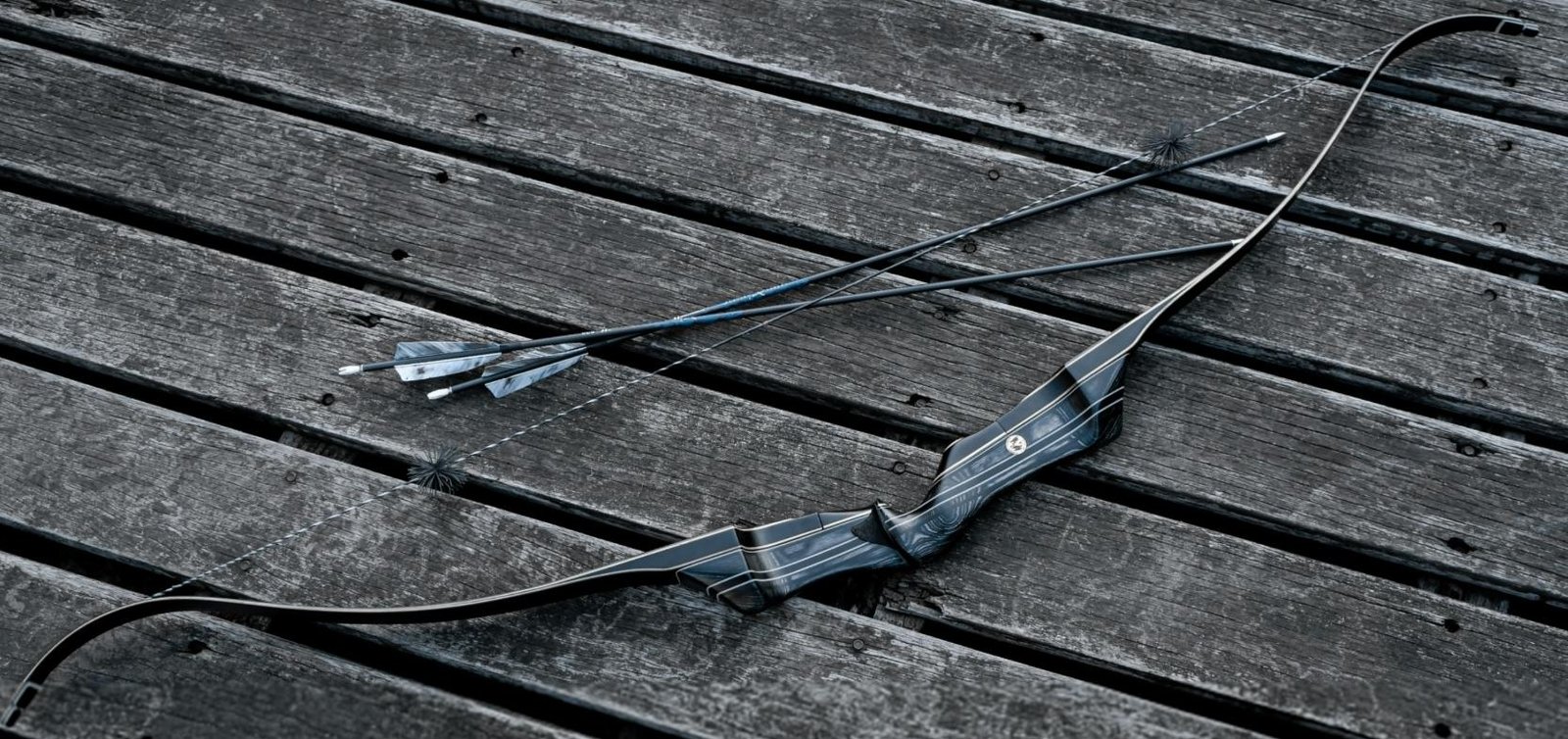Table of Contents
Introduction to Bow Types
Archery is an ancient sport and skill that has evolved significantly over the centuries. It encompasses a variety of disciplines and uses, ranging from recreational shooting to hunting and competitive events. At the heart of archery lie various types of bows, each engineered to fulfill specific functions, thereby catering to the diverse needs of archers. Among these, two prominent types are crossbows and compound bows, both of which have gained popularity for their unique features and capabilities.
Crossbows are distinguished by their horizontal limb configuration, resembling a small firearm. They utilize a trigger mechanism to release the arrow, or bolt, and are known for their ease of use, particularly for individuals who may have difficulty with more traditional bow types. The design allows for greater accuracy at shorter distances, making crossbows a favored choice for hunting, especially in environments where maneuverability and stealth are critical. The draw weight of a crossbow is also less burdensome on the user, enabling extended shooting sessions without as much fatigue.
In contrast, compound bows leverage a system of pulleys and cams to assist in drawing the string back, allowing for greater power and accuracy. The design facilitates a let-off feature, where the archer holds significantly less weight at full draw compared to a traditional bow. This allows for a smoother release and improved shooting precision, which is essential in both hunting and competitive archery. The versatility of compound bows makes them suitable for various distances, and they are often preferred in target archery due to their customizable nature. Understanding the fundamental characteristics of crossbows and compound bows is crucial for archers to choose the right equipment that aligns with their specific preferences and goals.
What is a Crossbow?
A crossbow is a type of weapon that consists of a horizontal bow mounted on a stock, which allows it to shoot projectiles, commonly referred to as bolts or quarrels. This design distinguishes it from traditional vertical bows, such as recurve and compound bows. The key components of a crossbow include the stock, limbs, string, and a trigger mechanism, each playing a crucial role in its functioning.
The stock, which serves as the frame of the crossbow, supports the limbs and provides a grip for the user. Typically made of materials such as wood, composite, or aluminum, the stock is essential for stability during aiming and firing. The limbs, which are often constructed from strong materials like fiberglass or carbon fiber, are responsible for storing energy when drawn back. Once the user releases the trigger, this stored energy propels the string, which in turn launches the projectile.
The strings of a crossbow are crucial for its operation, as they connect the limbs and transfer energy to propel the bolt forward. Modern crossbows often feature advanced technology, including cam systems and built-in safety mechanisms, enhancing accuracy and user experience. Additionally, the efficiency of crossbows allows for greater power and speed when compared to traditional bows, making them a formidable choice for various applications.
Crossbows are commonly utilized in both hunting and recreational target shooting. Their design makes them easier to use for individuals with varying physical capabilities, as they require less physical strength to draw compared to traditional bows. Consequently, crossbows have gained popularity among hunters for taking down game from a distance, as well as among sports enthusiasts engaged in target practice and competition shooting.
What is a Compound Bow?
A compound bow is an advanced archery instrument that combines modern technology with traditional bow mechanics to enhance performance and ease of use. Central to its design is the cam system, which involves a series of pulleys and cables that work in harmony to reduce the draw weight as the bowstring is pulled back. This makes it easier for the archer to hold the bow at full draw, allowing for greater accuracy during shooting.
The limbs of a compound bow are typically constructed from high-strength materials such as fiberglass or carbon, providing both durability and flexibility. The use of rigid limbs paired with a sophisticated cam system enables the bow to store and release energy more efficiently than traditional bows. This results in significantly faster arrow speeds, making compound bows a popular choice among both recreational archers and hunters.
One of the distinguishing features of compound bows is their adjustable draw weight. Archers can modify the tension of the bowstring, enabling beginner and experienced users alike to find a comfortable and effective setting prior to shooting. This adjustability not only enhances user experience but also allows for customization tailored to specific shooting styles or hunting requirements.
Compound bows are well-suited for various applications, ranging from target shooting to hunting. Their accuracy and power make them effective tools in both recreational settings and in the field during hunting seasons. Enthusiasts often appreciate the versatility of compound bows, as many manufacturers offer a wide range of models and accessories that cater to different skill levels and personal preferences.
In summary, compound bows stand out due to their innovative design, providing archers with enhanced performance and usability while accommodating various shooting applications.
Mechanics and Operation
The operational mechanics of crossbows and compound bows possess distinct characteristics, each influencing user experience and accuracy. A fundamental difference lies in the drawing mechanism. Crossbows utilize a horizontal limb system and a trigger mechanism, enabling the user to draw the string back manually or with a cocking device. This design allows the archer to set the bow in a ready position, freeing them to focus on aiming without the exertion of holding the draw. The release process in a crossbow is initiated by pulling a trigger, which releases the drawn string and propels the bolt with high efficiency.
Conversely, compound bows incorporate a system of cams and pulleys that enhance the bow’s efficiency through advanced engineering. When drawing a compound bow, the archer pulls back the string, activating the cams, which allows the archer to experience a “let-off” force—reducing the required effort needed to hold the draw at full extension. This engineering marvel not only improves accuracy by stabilizing the shooter’s aim but also enables the archer to maintain a longer draw without fatigue, facilitating a more controlled release process.
Regarding accuracy dynamics, crossbows generally deliver a straight trajectory due to the orientation of the limbs and the shorter power stroke. This design leads to fewer variables affecting the projectile’s flight path, making crossbows highly effective for precision shooting at varying distances. In contrast, compound bows, with their longer draw lengths and adjustable sights, offer versatility in aiming and distance compensation. However, they require practice to master their unique mechanics. Ultimately, both crossbows and compound bows offer distinct advantages in terms of mechanics and operation, catering to varying preferences and skill levels among archers.
Advantages of Crossbows
Crossbows offer a distinct set of advantages that make them an appealing choice for both novice and experienced archers. One of the primary benefits of crossbows is their ease of use. Unlike traditional vertical bows, crossbows require less skill to draw and aim accurately. With the draw mechanism already built into the device, users can focus on sight alignment and trigger control, making it more accessible for individuals who may struggle with the physical demands of drawing a compound bow.
This leads to another significant advantage: minimal physical strength is required to operate a crossbow. This characteristic makes crossbows particularly advantageous for certain groups, including those with limited upper body strength, older adults, or those recovering from injuries. As a result, alongside providing a significant edge for various user demographics, crossbows allow broader participation in hunting and archery activities.
Furthermore, crossbows can offer a greater potential for accuracy at shorter distances. Their design facilitates a stable shooting platform, which can lead to more consistent performance when aiming at game. With the ability to shoot bolts with minimal physical strain, users can take more time to focus on their target without the fatigue that might accompany prolonged use of traditional bows.
Additionally, hunting regulations often recognize the advantages of crossbows, permitting their use in certain hunting seasons where traditional bows may not be allowed due to their complexity or difficulty. This can provide hunters with additional options and opportunities. Overall, crossbows can present a user-friendly alternative, enhancing the shooting experience while allowing for effective hunting practices. Their ability to cater to a diverse range of users highlights their valuable role in the archery community.
Advantages of Compound Bows
Compound bows have gained significant popularity among archers due to their numerous advantages over traditional bows. One of the most notable features is the adjustable draw length and weight, which allows archers to customize their equipment to suit individual needs. This flexibility enables archers of varying physical statures to achieve optimal comfort and performance while aiming for accuracy. The ability to modify the draw weight is particularly important; it allows users to increase or decrease the tension based on their physical strength and skill level.
Another key advantage of compound bows is their inherent design, which maximizes energy efficiency. By utilizing a system of pulleys and cams, compound bows enable users to reach higher arrow velocities compared to traditional bows. This increased speed translates to a flatter trajectory, enhancing the accuracy of shots even at greater distances. As a result, compound bows are often favored in both target archery and hunting scenarios, where distance can significantly impact the effectiveness of a shot.
Moreover, compound bows are highly customizable, allowing archers to tailor their equipment with various accessories such as sights, stabilizers, and arrow rests. This customization not only enhances the performance but also gives users the ability to adapt their setup based on specific hunting conditions or target archery formats. The broader range of accessories available for compound bows compared to traditional counterparts further adds to their appeal.
In the realm of hunting, compound bows prove especially effective across different ranges, providing archers with a universal tool suitable for various game sizes. Their precision and adaptability make them a compelling choice for individuals targeting both long-range deer and shorter-range small game. Ultimately, through their unique features and customizable nature, compound bows remain a preferred option for many enthusiasts in the archery community.
Limitations of Crossbows
While crossbows have gained popularity among hunters and archery enthusiasts for their unique advantages, they also come with several notable limitations. One significant drawback is their weight. Crossbows are typically heavier than traditional compound bows. This added weight can make them cumbersome to carry over long distances, which may become a concern for hunters traversing rugged terrain. Consequently, the physical strain and fatigue associated with carrying a crossbow for extended periods can adversely affect one’s performance and experience in the field.
Additionally, crossbows often require specific equipment to operate efficiently. For instance, a cocking aid is frequently necessary to draw the string back with sufficient tension, particularly for those who may not possess the upper body strength to manage the task manually. These aids can add to the initial investment and complicate the handling of the weapon, which may discourage some users. Furthermore, the need for additional accessories can increase the overall weight, making it less favorable for prolonged use in hunting scenarios.
Another critical limitation relates to hunting regulations, which vary by region. Some areas impose restrictions on the use of crossbows during specific hunting seasons or impose licensing requirements that can be less stringent for traditional archery. These regulations can limit their practicality for hunters who may wish to use crossbows in various scenarios. Furthermore, the perception of crossbows as a less traditional form of archery can sometimes diminish their appeal among purists who prefer the challenge presented by compound bows.
In conclusion, while crossbows serve as an effective alternative for many, their weight, requirement for additional equipment, and regulatory constraints highlight essential considerations for potential users. Understanding these limitations is crucial for making an informed choice between a crossbow and a compound bow, based on individual needs and circumstances.
Limitations of Compound Bows
While compound bows have gained popularity among archers for their power and accuracy, they also come with several limitations that potential users should consider before making a purchase. One significant drawback is the learning curve associated with their use. Unlike traditional bows, compound bows feature a system of pulleys and cams, which may be complicated for beginners. Mastering the technique to shoot effectively often requires more time and practice, potentially discouraging novice archers who desire immediate results.
Additionally, regular maintenance is essential for compound bows to ensure their optimal performance. The intricate components, such as cables and limb systems, may become misaligned or require adjustment over time. This need for ongoing maintenance can be daunting for users who prefer a lower-maintenance shooting option. In contrast, traditional bows might require less upkeep, making them more accessible for casual users or those with limited technical knowledge.
Furthermore, compound bows may not be suitable for all hunting situations. Their mechanical components such as sights, rests, and stabilizers can be vulnerable to malfunctions in rugged outdoor settings. Hunters operating in remote areas may encounter difficulties if their bow requires repairs or adjustments. Moreover, the weight and bulk of some compound bows can hinder mobility in certain environments where stealth and agility are crucial. This can limit usability for hunters who move frequently or need to navigate dense brush to pursue game.
In summary, while compound bows offer numerous advantages, their limitations concerning the learning curve, maintenance needs, and practicality in specific hunting contexts should be carefully evaluated by prospective users.
Choosing the Right Bow for You
When determining which bow is suited to your needs, it is crucial to consider various factors such as skill level, intended use, personal preferences, and budget. Both crossbows and compound bows have distinct characteristics that may influence your choice. Understanding these aspects can help ensure a satisfactory experience in your archery endeavors.
Your skill level is a significant consideration in making this decision. If you are a beginner, a crossbow might provide a more accessible introduction to archery. Crossbows generally require less upper body strength and can be aimed with little prior experience. Conversely, compound bows necessitate a learning curve that involves mastering shooting form and drawing the string effectively. Those with more experience may find the versatility and challenge of a compound bow appealing.
Another aspect to think about is your intended use. If you’re considering hunting, both bows are capable of delivering reliable performance. However, many seasoned hunters prefer compound bows for their accuracy at longer distances, while crossbows are often favored for their ease of use and the ability to hold them in a ready position, making them beneficial for quick shots. For target shooting, compound bows are widely acclaimed for their customizable settings, enabling precise shooting over longer distances. Conversely, crossbows may appeal to those seeking a different shooting experience.
Personal preferences also play a considerable role. Some archers might prefer the traditional aspects associated with shooting a compound bow, while others may appreciate the mechanical nature of a crossbow. Finally, budget constraints cannot be overlooked. Crossbows tend to have a higher upfront cost along with additional expenses for accessories, making it essential to evaluate what fits your financial capacity.
Ultimately, understanding your unique needs will lead you toward selecting the right bow, ensuring an enjoyable archery experience.






